Neurons Anyone?
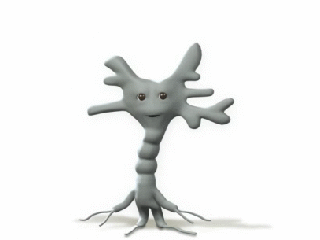
Neurons enable our bodies to transmit information over long distances at high speeds. All living cells have an excess of negative electrical charge on the inside of the cell relative to the outside. The electrical properties of neurons and the ion concentration gradients and ion channels create the neuron’s resting potential and allow an action potential to be triggered in a neuron.

The nervous system
One major functional difference between the endocrine system and the nervous system is the relative speeds with which they send information. Hormonal communication is relatively slow. Hormones, such as epinephrine, can act quite quickly, in a few seconds, but even that short time is much too slow for some information that has to be transmitted among the parts of a complex organism. For example, someone juggling three balls needs information to travel among muscle and eye receptors, the central nervous system (acting as a comparator), and muscle effectors much faster than is possible by hormones traveling through the bloodstream. The nervous system is responsible for such rapid transmission and processing of information in animals, and its specialized cells are called nerve cells, or neurons.
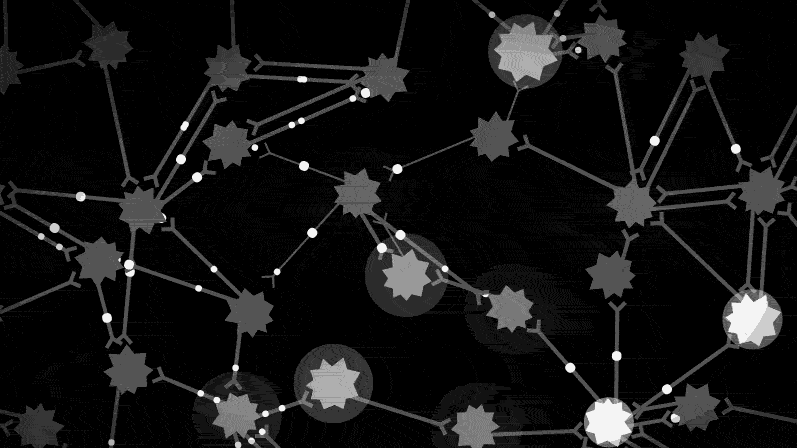
Electric Cells
Neurons are similar to other cells in many ways, including many of their electrical properties, but they have three unique features:
The first unique feature is that the voltage across a neuron membrane changes rapidly and in a controlled fashion. This change is called an action potential.
The second unique feature is that this action potential can propagate over long distances.
The third feature is that one neuron can influence the voltage of another neuron.
The first and third of these features are the result of specializations of the neuron’s cell membrane, specifically, membrane proteins that act as ion channels. The second feature is largely a matter of the peculiar anatomy of nerve cells.
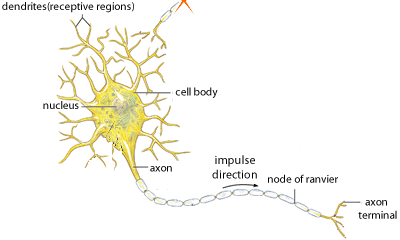
The Axon and Dendrite
The most obvious anatomical difference between neurons and other cells is that neurons have several long processes extending from the body of the cell. Often, one of these processes (the axon) is much longer than the others. Usually, a number of shorter processes, called dendrites, also extend from the cell body. The neuron described is generic; neurons come in many different shapes that relate to the way particular kinds of neurons receive and transmit information. Most neurons have an axon, however. At the most distal tip of the axon is a specialized region called the synaptic terminal, which typically connects with another neuron, either directly on the cell body or on the dendrites. This arrangement suggests that neurons transmit information from one to the other at this point of contact, which is the case. The specialization of neurons for long-distance transmission is largely a matter of cell structure; in contrast to the “broadcast” nature of hormones, neural information travels directly to the intended target along cellular “wires.”
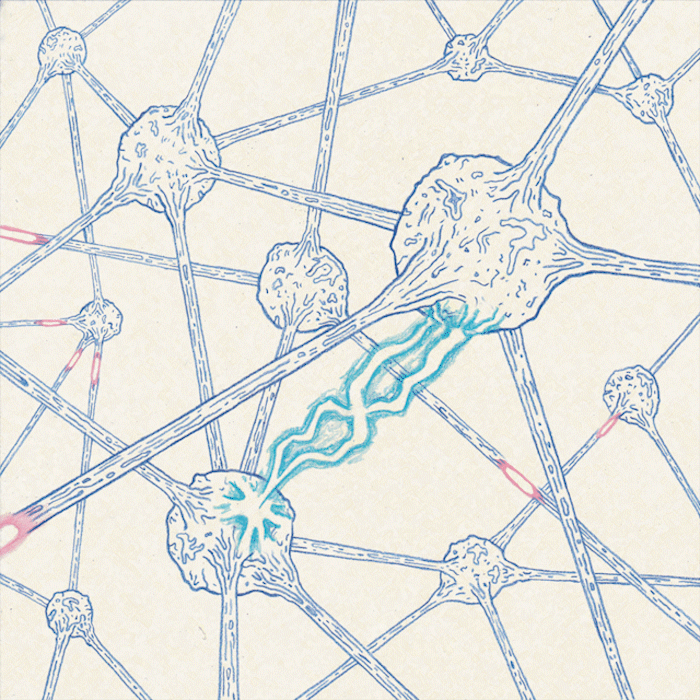
Charged Ions
The electrical signals that neurons transmit are basically the result of differences in the concentrations of charged ions on either side of a cell membrane. All living cells have an excess of negative electrical charge on the inside of the cell relative to the outside. As a result, there is an electrical potential difference a voltage difference across the membrane. Voltage is a measure of potential energy available to move electrons or charged ions. A battery’s voltage is an electric potential between its two terminals; if the positive and negative terminals are connected by a wire, electrons will flow from the negative to the positive terminal. This flow of electrons can be used to do work. The voltage measured across the plasma membrane (in the range of about –60 mV for a typical neuron) is called the membrane potential.
The membrane potential of a neuron at rest is called its resting potential and primarily results from two factors. The first factor is that the composition of charged ions differs between the extracellular fluid and the cytoplasm of the cell. The second factor is that different kinds of charged ions are able to cross the cell membrane to a greater or lesser extent. Both the cytoplasm of the cell and the extracellular fluid that surrounds it contain various kinds of positively and negatively charged ions. Inside the cell, the principal cation (positive ion) is potassium (K+), although there also is some sodium (Na+). Outside the cell, these relative concentrations are reversed. The main anions (negative ions) inside the cell are various charged organic molecules, including proteins, amino acids, and phosphates.
Outside the cell, chloride ions (Cl–) are the major anions, although some chloride occurs inside the cell, as well. The key point is the relative concentration of charged ions, particularly K+ and Na+, inside and outside the cell. Normally, K+ is high inside the cell and low outside; Na+ is low inside the cell and high outside. Concentration differences alone do not account for the membrane potential, however; also important are the permeabilities of these ions how freely ions can pass through the cell membrane.
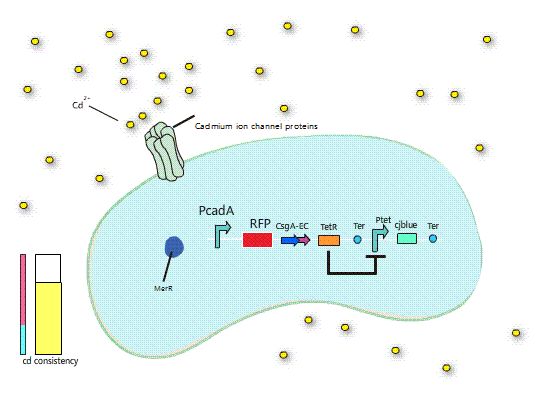
Ion Channels
Ions cannot pass directly through cell membranes but must pass through ion channels. Ions cannot pass directly through the cell membrane because they are electrically charged. Instead, they must travel through transmembrane proteins that act as channels. There are many kinds of ion channel proteins, but they can be categorized by a few defining properties.
One property involves the kinds of ions that can pass through the channel.
Many channels are highly selective (they allow only one kind of ion to pass).
Another defining property of ion channels concerns how ions move through them.
Some ion channels are passive; ions cross them under the power of diffusion. In the absence of any other force, ions will diffuse from a region of high concentration to a region of lower concentration. This action is referred to as moving down a concentration gradient. For example, all other things being equal, K+ would flow through passive K+-selective channels from the inside of the cell to the outside.
Passive membrane channels determine the extent to which an ion can diffuse through the cell membrane. For example, K+ ions have much greater permeability than Na+ across the membrane of a resting neuron; this largely reflects the fact that there are many more K+ passive channels than Na+ passive channels.
Other types of ion channels are active; they actively pump ions against the concentration gradient, which requires energy.
The most important ion pump in neurons is the sodium-potassium pump. It simultaneously pumps Na+ ions outside the cell and K+ ions into the cell (in both cases, up the concentration gradient).
Over the long run, the sodium-potassium pump maintains the concentration gradients of K+ and Na+ against the movement of K+ and Na+ ions through passive channels.
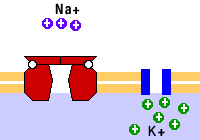
A final defining property of ion channels is whether they are always open or can be closed.
Ion channels that can be opened and closed are called gated channels. Several kinds of stimuli can open or close gated ion channels. The overarching theme is that the permeability of the cell membrane to a particular ion depends on the number of open channels allowing that kind of ion to pass. The more open channels, the more permeable the ion.
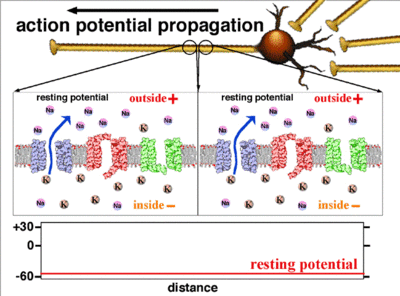
Resting Membrane Potential
With this background, we can examine the resting membrane potential in more detail. The cell membrane is fairly permeable to K+, and there is a strong concentration gradient across it, with K+ high on the inside and low on the outside. We expect a net movement of K+ ions out of the cell, running down their concentration gradient. Although the chemical gradient tends to push K+ outside, an electrical gradient tends to pull K+ inside. Because K+ is a positive ion, it is repelled by excess positive charge outside the cell and attracted by excess negative charge inside the cell. At some point, the chemical force pushing K+ out of the cell will exactly match the electrical force pushing K+ back into the cell. At this point, the flux of K+ ions will be in equilibrium—there will be an equal number moving into and out of the cell. This equilibrium occurs at the voltage at which the electrical and chemical forces are equal and opposite (–85 mV for K+)—thus, the presence of a concentration gradient for a charged ion across a membrane will create a voltage difference. E. The difference between the resting membrane potential for a typical neuron and the equilibrium potential for K+ comes from the fact that Na+ is also permeable. However, it is not nearly as permeable as K+; even though both chemical and electrical gradients push it into the cell, only a relatively small number of Na+ ions get inside.
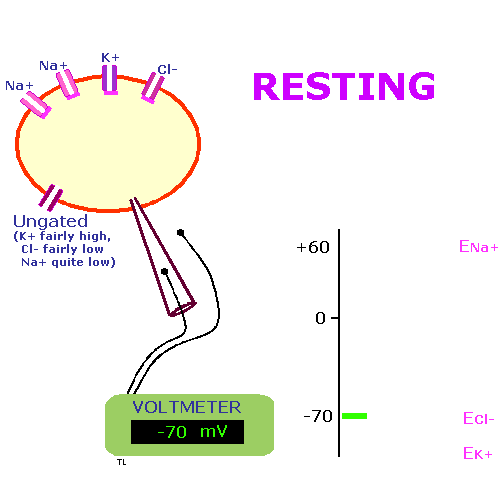
The membrane potential of a neuron can change If the cell membrane suddenly becomes more permeable to Na+, the voltage across the membrane will become more positive (it will depolarize) as Na+ rushes into the cell. If the membrane potential of a neuron is depolarized above some threshold (about 15 or 20 mV more positive than the resting membrane potential for a typical cell), the inside of the cell suddenly becomes much more positive than the outside. The membrane voltage then drops (repolarizes) suddenly before returning to the normal resting membrane potential. This rapid change in voltage is called the action potential; it is the event that allows neurons to function as they do.

Sources: 1
Image Sources: Giphy

Thanks for Donating #steemit !
BTC: 1JQWNxziArfaCtxsP3tUQ4VSTBY9jresmt

This post has been ranked within the top 10 most undervalued posts in the second half of Nov 09. We estimate that this post is undervalued by $16.44 as compared to a scenario in which every voter had an equal say.
See the full rankings and details in The Daily Tribune: Nov 09 - Part II. You can also read about some of our methodology, data analysis and technical details in our initial post.
If you are the author and would prefer not to receive these comments, simply reply "Stop" to this comment.
Those are cool animations. Did you make them yourself?
They were sourced from giphy as per the credits section.
This post has been linked to from another place on Steem.
Learn more about and upvote to support linkback bot v0.5. Flag this comment if you don't want the bot to continue posting linkbacks for your posts.
Built by @ontofractal